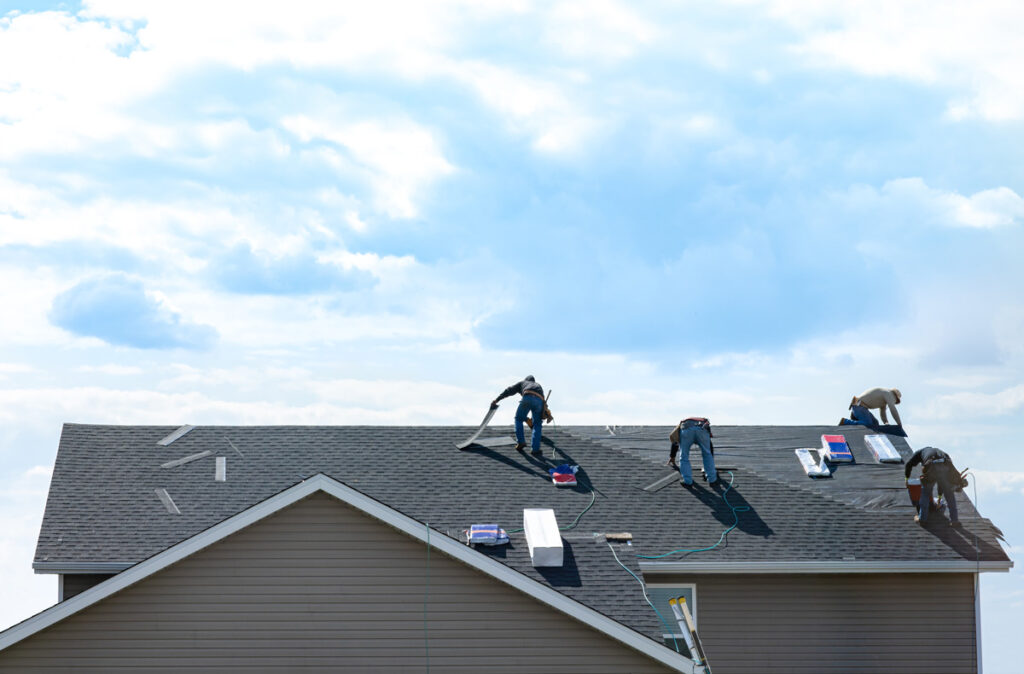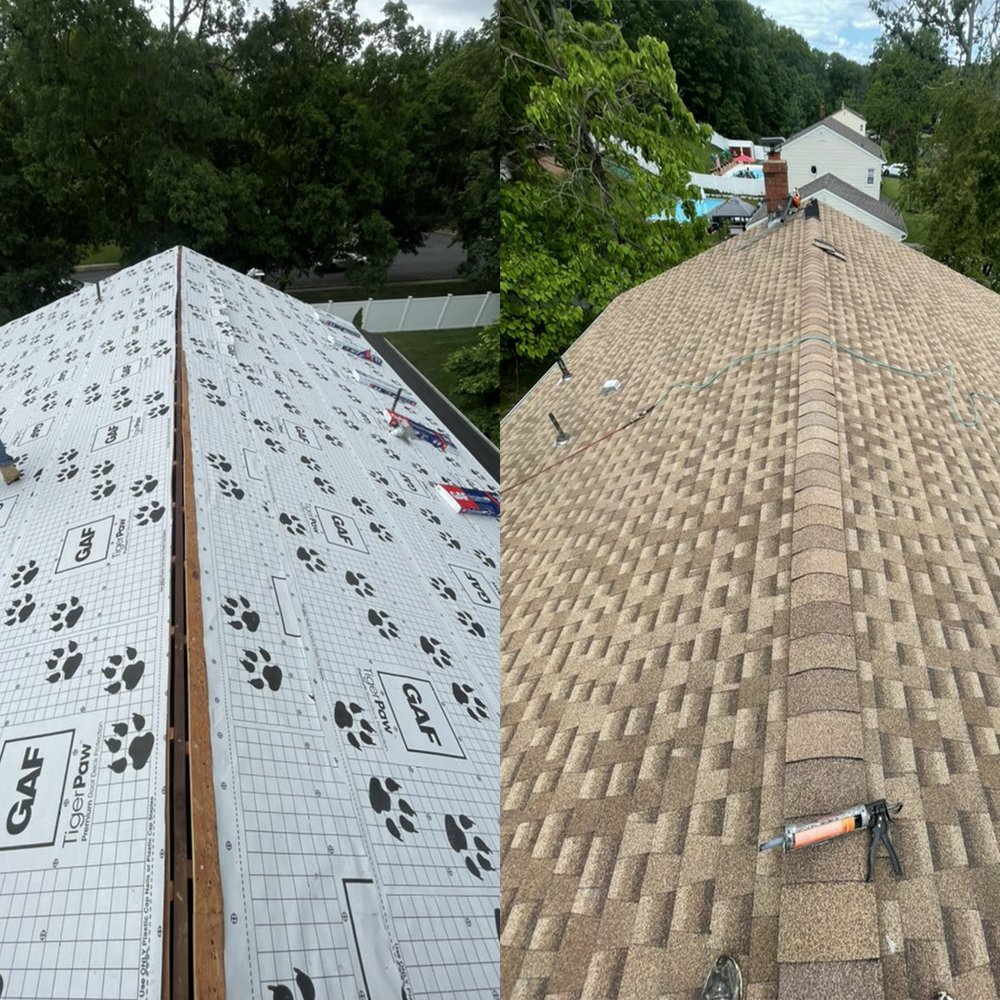Roof Repair Oahu: Quick and Affordable Roof Takes Care Of Near You
Roof Repair Oahu: Quick and Affordable Roof Takes Care Of Near You
Blog Article
Comprehending the Different Sorts Of Roofs: A Comprehensive Guide for Homeowners
With an array of choices-- ranging from the traditional gable to the modern level-- each kind presents one-of-a-kind benefits and obstacles that should straighten with the home owner's particular demands and ecological considerations. As we explore the details of different roofing types, it comes to be apparent that one dimension does not fit all; the right choice may surprise you.
Saddleback Roof
Saddleback roofs, defined by their triangular shape, are among one of the most preferred roof covering styles due to their simplicity and effectiveness in dropping water and snow. This design features two sloping sides that meet at a ridge, allowing for reliable drain and lessening the risk of water buildup. The steep pitch generally linked with saddleback roofs enhances their ability to manage heavy rainfall, making them appropriate for numerous environments.
In enhancement to their sensible advantages, saddleback roofs supply aesthetic versatility. They can be adjusted to numerous architectural designs, from standard to modern-day homes. The style can likewise fit extra functions such as dormer windows, which improve natural light and ventilation in the attic room room.
Furthermore, saddleback roofs offer enough room for insulation, contributing to power performance. Homeowners can pick from a selection of roof covering materials, consisting of asphalt roof shingles, metal, and tiles, further boosting modification options.
Despite their advantages, gable roofs might require additional assistance in locations vulnerable to high winds or hefty snowfall. In general, the saddleback roof stays a preferred selection because of its mix of capability, resilience, and aesthetic charm.
Flat Roofs
Flat roofing systems are typically acknowledged for their minimalist design and sensible applications, specifically in industrial and commercial setups (oahu roofing). These roofings feature a horizontal or virtually straight surface area, which permits simple construction and versatile room use. While they may do not have the visual charm of pitched roofs, level roofings offer numerous advantages, specifically in metropolitan environments where making best use of area is essential
Among the main benefits of flat roofs is their access. Property owners can utilize the roofing space for numerous purposes, such as roof yards, terraces, or photovoltaic panel setups. In addition, flat roof coverings are usually more economical to maintain and set up contrasted to their sloped equivalents, as they need less materials and labor.
Typical materials utilized for flat roofs include built-up roofing (BUR), modified bitumen, and single-ply membranes, each offering distinct benefits. In general, flat roofing systems serve as a functional and adaptable selection for several homeowners and organizations alike.
Hip Roofing Systems
Hip roof coverings are identified by their sloped sides that merge on top, developing a ridge. This style stands out from gable roofing systems, as all four sides of a hip roofing system slope downwards towards the wall surfaces, offering an extra steady structure. The angle of the slopes can differ, enabling adaptability in architectural looks and performance.
One of the key benefits of hip roofing systems is their ability to hold up against hefty winds and adverse climate condition. The sloped surfaces allow far better water drain, lowering the danger of leaks and water damages. Furthermore, hip roofs supply boosted attic room, which can be used for storage space or also exchanged livable locations.
However, creating a hip roofing system can be more pricey and complex than less complex roofing system kinds, such as gable roofing systems. The added product and labor involved in developing the slopes and making sure proper architectural integrity can result in greater expenses. In spite of these drawbacks, numerous home owners favor hip roof coverings for their resilience, visual appeal, and capacity for power performance.
Mansard Roofing Systems
Mansard roofings, often acknowledged by their one-of-a-kind four-sided design, function 2 inclines on each side, with the reduced slope being steeper than the upper. This architectural design, stemming from France in the 17th my company century, is not just aesthetically attractive however useful, as it takes full advantage of the functional space in the upper floors of a structure. The high reduced incline permits more headroom, making it an optimal selection for attic rooms or loft spaces, which can be converted into living spaces.
Mansard roofings are defined by their adaptability, accommodating different architectural designs, from traditional to modern. They can be built with different products, consisting of asphalt shingles, slate, or metal, supplying house owners with a series of choices to suit their budget plans and choices. Furthermore, the layout allows for the combination of dormer windows, improving all-natural light and air flow in the top degrees.
Nevertheless, it is necessary to think about the prospective disadvantages. Mansard roofing systems may require more upkeep due to the complexity of their design, and their steep inclines can be testing for snow and rainfall drainage. Generally, mansard roofing systems combine elegance with practicality, making them a preferred selection among property owners looking for distinctive architectural features.
Dropped Roof Coverings
As house owners progressively look for simpleness and performance in their building designs, shed roof coverings have become a preferred option. Characterized by a single sloping airplane, a shed roofing system offers a minimal aesthetic that matches different home styles, from modern to rustic.
Among the main advantages of a shed roof covering is its uncomplicated construction, which address typically equates to decrease labor and material costs. This style permits reliable water drain, minimizing the threat of leaks and water damage. Additionally, the upright incline offers sufficient space for skylights, boosting all-natural light within the interior.
Lost roofing systems also supply flexibility in regards to use. They can be effectively incorporated into additions, garages, or outside frameworks like sheds and structures. Moreover, this roof covering style can fit numerous roofing products, including steel, asphalt shingles, or also environment-friendly roofing systems, lining up with eco-friendly campaigns.
However, it is necessary to consider regional environment problems, as hefty snow tons might necessitate adjustments to the roofing's angle or framework. Generally, lost roofs provide a useful and cosmetically pleasing option for homeowners aiming to make the most of performance without endangering style.
Final Thought


Gable roof coverings, defined by their triangular shape, are amongst the most prominent roofing styles due to their simplicity and performance in dropping water and snow. oahu roofing. The steep pitch typically linked with gable roofing systems improves their ability to handle hefty rainfall, making them suitable for different environments
While they might lack the visual allure of pitched roofing systems, level roofings supply many advantages, particularly in city settings where making the most of room is important.

Report this page